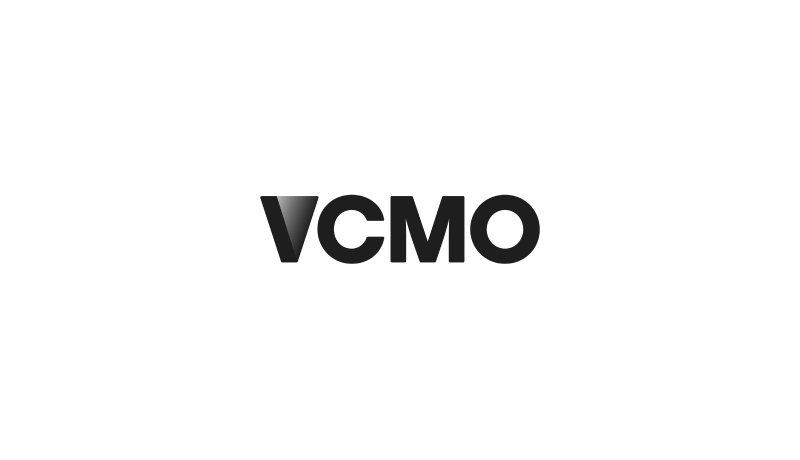Explore which model—Fractional or Virtual CMO—best aligns with your growth strategy.
Introduction: Why the Distinction Matters
For ambitious businesses, the question is no longer whether to secure senior marketing leadership, but how best to structure it. Few small or mid-market companies can justify the cost of a full-time Chief Marketing Officer (CMO), yet the need for strategic oversight, brand clarity, and commercial accountability is more pressing than ever. As a result, two models have gained traction: the Fractional CMO and the Virtual CMO.
Both offer access to seasoned marketing leadership without the overhead of a permanent executive. But they do so under very different terms of engagement. The fractional model is typically anchored in part-time, embedded leadership, where the CMO becomes part of the team and works closely with the board. The virtual model, by contrast, is fully remote and often digitally focused, providing agility and scale for businesses that operate online or with distributed teams.
Understanding these distinctions matters because the choice is strategic. The wrong model can leave a business with misaligned leadership, cultural gaps, or wasted investment. This article examines the core differences, explores which model fits which type of business, and outlines the implications for growth, investor confidence, and long-term marketing capability.
“The choice between a Fractional CMO and Virtual CMO is not about definitions—it’s about aligning the leadership model with business stage, market context, and growth ambitions.”
What is a Fractional CMO?
A Fractional Chief Marketing Officer (CMO) is a senior executive who provides part-time leadership, typically on a retained basis, for businesses that need strategic direction but do not require—or cannot yet afford—a full-time CMO. Unlike agencies or consultants, a fractional CMO embeds into the business, aligning marketing with commercial objectives and sitting alongside the leadership team as a trusted advisor.
Their role is inherently strategic. They set the roadmap for brand positioning, go-to-market activity, and demand generation, while also mentoring internal teams and holding agencies accountable for performance. Many Fractional CMOs split their time between on-site presence and remote work, ensuring both cultural integration and delivery flexibility.
This model is especially valuable for scaleups, investor-backed firms, or SMEs in transition. These businesses benefit from having executive-level oversight without the fixed costs of a permanent hire. By providing continuity, structure, and accountability, Fractional CMOs act as a bridge between board ambition and marketing execution—ensuring activity drives measurable growth.
For a more comprehensive breakdown of responsibilities, engagement models, and benefits, see our dedicated guide: What is a Fractional CMO?
What is a Virtual CMO?
A Virtual Chief Marketing Officer (VCMO) provides the same calibre of strategic leadership as a Fractional CMO but operates entirely remotely. Rather than being embedded physically within a business, the Virtual CMO engages through digital channels—video conferencing, collaboration platforms, and shared project tools. This model is particularly well suited to businesses that are digital-first, geographically distributed, or comfortable with remote ways of working.
Virtual CMOs typically focus on driving marketing outcomes in online environments. Their expertise spans digital acquisition, brand visibility, and customer engagement across channels such as search, social, content, and automation platforms. While their remit is strategic, their remote model demands agility: they must adapt quickly, integrate seamlessly into distributed teams, and deliver results without the benefit of day-to-day in-person interaction.
For many organisations, the appeal lies in scalability and access to a wider talent pool. Location ceases to be a limiting factor, enabling businesses to tap into world-class expertise regardless of geography. This model also reduces incidental costs, such as travel or office time, making it attractive for firms operating lean.
For an in-depth discussion of this model, see our dedicated article: What is a Virtual CMO & Why Your Business Needs One.
Key Differences at a Glance
Although both Fractional and Virtual CMOs provide access to senior marketing leadership without the cost of a permanent executive, their engagement models differ in ways that matter to business outcomes. The table below summarises the distinctions:
Interpreting the Differences
The decision between the two models is less about which is “better” and more about which aligns with your business model, operating environment, and growth priorities. Fractional CMOs bring embedded leadership, cultural alignment, and breadth across offline and online channels. Virtual CMOs, by contrast, offer digital-first expertise, remote scalability, and access to a broader pool of talent at lower cost. The right choice depends on whether your organisation values integration and in-person influence, or agility and global reach.
“Fractional CMOs bring cultural integration and boardroom presence, while virtual CMOs deliver digital-first agility and global reach. The distinction lies in what the business values most.”
How to Decide: Matching Model to Business Context
Choosing between a Fractional and a virtual CMO is not about definitions but about alignment. The right model depends on where your business is today, the challenges you face, and the outcomes you need. Below are eight considerations that can guide the decision:
- Business Stage and Maturity - Early-stage ventures and investor-backed firms often benefit from Fractional CMOs who provide embedded leadership and boardroom presence. Early-stage digital-first businesses may find a Virtual CMO more appropriate, offering strategic input without the weight of additional travel expenses.
- Operating Model - Companies with a hybrid or offline presence may need in-person integration to align marketing with sales and operations. By contrast, firms that are fully digital or globally distributed may find virtual leadership a natural extension of their existing workflows.
- Team Structure - A Fractional CMO adds value where mentoring and team development are needed. For lean organisations that outsource execution to agencies or freelancers, a Virtual CMO can provide strategic oversight without necessarily embedding in day-to-day operations.
- Investor Expectations - For businesses under investor scrutiny, the visible presence of a Fractional CMO can build confidence and credibility. A Virtual CMO may be sufficient for digital-native companies, but investors often expect senior leaders to demonstrate integration at board level.
- Cultural Fit - Fractional CMOs typically influence company culture more directly through in-person interaction. If your organisation values strong leadership presence and mentoring, the fractional model is preferable. If your team is already comfortable with remote collaboration, a virtual model can work seamlessly.
- Budget and Cost Flexibility - Fractional retainers tend to be higher due to embedded involvement, while virtual CMOs can often deliver leaner engagements. The right choice depends on whether you prioritise cultural integration or maximum flexibility within tighter budgets.
- Strategic Priorities - If your strategy spans multiple channels—including offline events, field marketing, or complex sales enablement—a Fractional CMO may offer broader oversight. If your growth is almost entirely digital, a Virtual CMO can deliver sharper focus in those areas.
- Scalability and Speed - Virtual CMOs offer greater scalability, with involvement increased or decreased as business needs shift. Fractional CMOs provide stability and continuity, which can be more important when navigating major transformations or restructuring.
Read more in our article: How to Choose a Fractional CMO for Your Business: A Comprehensive Guide.
Strategic Implications for CEOs & Investors
The decision between a Fractional and a virtual CMO carries implications well beyond marketing. For CEOs and investors, it influences how the business is perceived, how quickly it can scale, and how resilient its growth engine will be.
A Fractional CMO brings board-level credibility. Their presence in leadership meetings, direct engagement with teams, and ability to shape cross-functional collaboration all signal to investors that the business is building a sustainable, professionalised marketing capability. This is particularly important in due diligence processes, where evidence of structured leadership can increase confidence in future valuation.
A Virtual CMO, meanwhile, represents agility and efficiency. It demonstrates that the business can access world-class expertise without overcommitting resources, which can be attractive in early-stage ventures where capital must be preserved. However, the lack of embedded presence may raise questions if the business is preparing for a major funding round or enterprise clients who expect visible leadership.
Ultimately, the choice signals how the business balances credibility, scalability, and cost efficiency. Both models can deliver value, but each sends a different message about readiness, maturity, and long-term vision—factors that weigh heavily in the eyes of boards and investors.
“To investors, the leadership model signals readiness. A Fractional CMO shows embedded capability, while a Virtual CMO demonstrates efficiency and scalability. Both send powerful, but very different, messages.”
Conclusion: Choosing the Right Leadership Model
The distinction between a Fractional CMO and a virtual CMO is more than a question of terminology—it is a decision about how best to structure senior marketing leadership for your business. Both models offer access to the strategic expertise of a seasoned executive without the overhead of a full-time appointment, but they deliver that expertise in different ways.
A Fractional CMO provides embedded leadership, stronger cultural integration, and visible boardroom presence—qualities that are invaluable for scaling businesses, companies in transition, or organisations under investor scrutiny. A Virtual CMO, by contrast, brings digital-first agility, scalability, and access to a global talent pool—an option well suited to lean, distributed, or online-centric firms.
The right choice depends on your context: your operating model, growth priorities, team structure, and investor expectations. For some, the decision is not binary—combining fractional leadership with virtual delivery can create the balance of integration and flexibility that modern businesses require.
In an era where marketing leadership can directly influence enterprise value, the critical step is alignment. Choose the model that fits your stage, strategy, and ambitions, and you ensure that marketing leadership becomes not just a function, but a catalyst for growth.
Get in touch: If this article reflects what you’re experiencing, get in touch to explore whether fractional marketing leadership is the right fit for your business.
Suggested reading:
How Fractional CMOs Help Businesses Grow
How Fractional CMOs Help Businesses Save Money
Fractional CMO vs Agency: What’s the Right Fit?
About VCMO
VCMO is a UK-based provider of fractional marketing services, supporting B2B SMEs—ranging from funded scale-ups to mid-tier and private equity-backed businesses—through key moments of growth and transformation. Its Chartered Fractional CMOs and SOSTAC® certified planners embed strategic marketing leadership into organisations navigating product launches, new market entry, acquisitions, and leadership gaps.
What’s a Rich Text element?
The rich text element allows you to create and format headings, paragraphs, blockquotes, images, and video all in one place instead of having to add and format them individually. Just double-click and easily create content.
- By following these tips, you can make sure you’re noticed on LinkedIn and start building the professional connections you need to further your career.
-

Static and dynamic content editing
A rich text element can be used with static or dynamic content. For static content, just drop it into any page and begin editing. For dynamic content, add a rich text field to any collection and then connect a rich text element to that field in the settings panel. Voila!
How to customize formatting for each rich text
Headings, paragraphs, blockquotes, figures, images, and figure captions can all be styled after a class is added to the rich text element using the "When inside of" nested selector system.


Ready to take your marketing to the next level? Let us help you get there.
Subscribe to Our Newsletter
Fractional Edge is our montly newsletter sharing expert opinion on the latest trends in fractional leadership, curated marketing content from leading sources, VCMO events, and much more. Subscribing is quick — just add your name and email.











.jpg)





